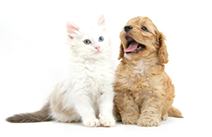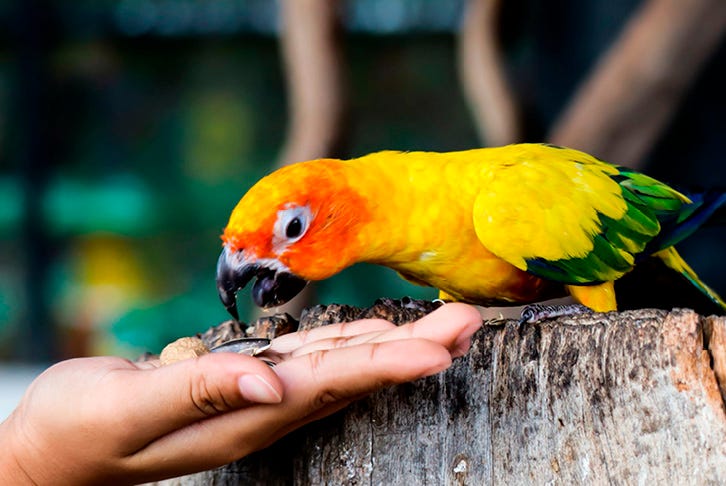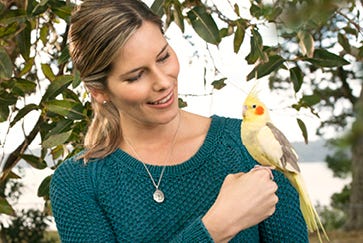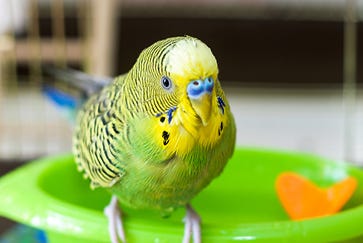Creating a safe and happy environment for your bird
In addition to ensuring the physical health of your feathered friend, it's important to create a safe, stimulating environment that also promotes their mental wellbeing.
Learn how to create a happy and hazard-free environment for your bird in this guide.
Choosing the right cage for your bird
Any enclosure should provide a large space relative to the size of the bird, to allow for free movement and flight.
In general, a cage should be large enough for your bird to walk around comfortably, to fully extend and flap their wings, with provide plenty of exercise opportunities. Most birds also enjoy flying, which is both psychologically and physically healthy for them – so purchase the largest size cage that you can afford and fit in your household. Remember that space will be lost when you add your bird's perches, food bowls, and toys!
Certain breeds have unique needs.
- Medium to large parrots require enough space to climb and get plenty of exercise.
- Canaries and finches prefer a cage that is wide and long enough to allow for flying.
- Budgies prefer a cage that is tall and wide so they can move around.
- Long tailed birds like conures, cockatiels, Indian Ringnecks and those in the parakeet family need a cage that is both wide and tall enough to accommodate their large tail feathers
Tips for selecting the right bird cage:
- Material: Ensure the cage is strong enough & made of sturdy, non-toxic materials, including any paint or finish.
- Size: Buy the biggest cage you can afford, preferably the longest rather than the tallest. Tall, narrow cylindrical cages are not suitable for most birds.
- Cleaning: Straight sides make for easier cleaning.
- Safety: The cage should be as escape and intrusion-proof as possible.
- Bird size: Taller birds need cages high enough to provide plenty of tail clearance. Birds with relatively wide wingspans need a cage that will allow them to stretch out.
- Bar spacing: Ensure that the bar spacing is appropriate for the size of your bird. Smaller birds, such as parakeets and lovebirds, require cages with bars no more than a half inch apart, to prevent them from squeezing their head through or becoming stuck between the bars. Many bird owners have been surprised to find out their pets can be little escape artists! If you have a larger bird, look for horizontal bars to give your bird a means of climbing and exercise.
For more help choosing the best cage for your feathered friend, pop into your local Animates store for personalised advice.
Finding the right furniture
Good foot health is promoted by having multiple perches of varying diameters. When choosing perches, avoid metal or plastic perches and only use wooden dowels (uniform in size across the perch) if natural branches aren’t available.
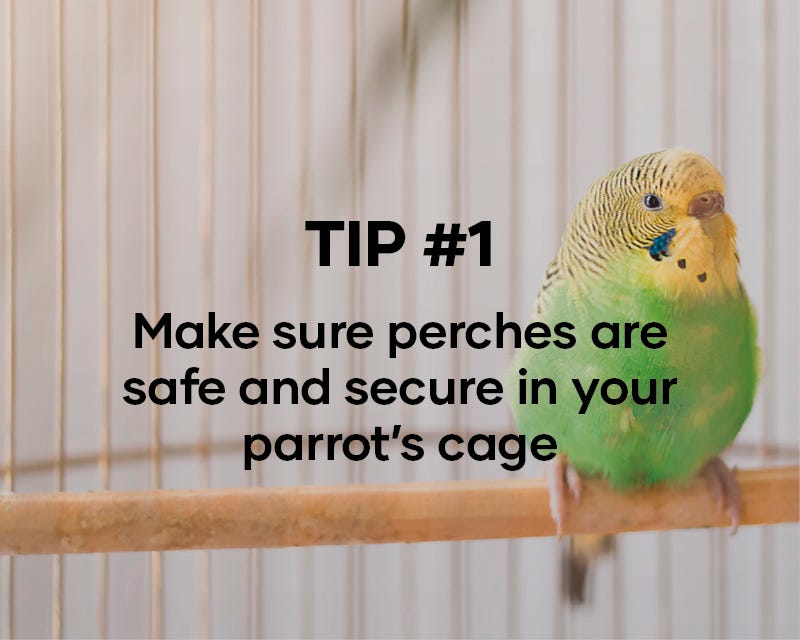
Top tips on perches:
- Placement: Create multiple levels within the cage to encourages movement & climbing. Place them securely & away from the sides, so your birds’ tail doesn’t hit the bars.
- Thickness: Your bird's feet should be able to wrap between 2/3 and 3/4 around the perch.
- Quantity: don't overcrowd the cage - too many perches as this inhibits your bird’s movement.
- Prevent food and water contamination: Don't place perches directly over the food or water dishes.
- High perch: a secure natural or rope perch is recommended for the highest perch where birds like to sleep and spend most of their time.
- Cement perches are recommended to near the food dish - as birds often use this surface to clean their beaks.
- DIY perches: If you want to source perches from the backyard, make sure it’s a bird-safe wood from non-toxic trees such as apple, ash, birch, chestnut, eucalyptus, pear, popular and willow. They’re soft on the skin & their variable diameters help promote circulation to the feet. Parrots love to chew the bark and wood which keeps their growing beak trimmed.
Furnish your bird’s home with a selection of toys for them to play with and explore - such as swings, bells, ladders to climb on & other bird-friendly toys for keeping them entertained.
Choosing toys your bird will love:
- Pick toys that allow them to exhibit their natural behaviours, like climbing (ladders), searching for food (foraging toys), exercising (swings), chewing to help with beak and nail conditioning (destructible chewing toys).
- Foraging toys allow parrots to work for their food as they do in the wild for an enriching experience. These toys allow treats to be hidden (e.g. threaded on a skewer or stuffed in a hole) providing your bird with hours of entertainment.
- Match the toy to the size and breed of your feathered friend (our store staff can help if needed).
- Toys for cages should be chosen carefully. Please avoid hooks, wire clasps, removable bells, anything which could trap the bird, or is small enough to be swallowed.
- For safety reasons, throw out any toys with rust, or that have been excessively chewed or worn.
Feel free to chat to your local Animates team member for advice on finding the right accessories for your pet bird.
Cleaning your bird’s cage
A key to keeping your bird healthy is regular cleaning of their cage, play stands, and accessories. Dirty cages can lead to a host of serious health problems in birds.
Steps to keep your bird’s cage fresh & clean:
- Line the cage floor with newspaper or paper towels. Don’t use woodchips, shavings, sandpaper, grit or sawdust. Some cages have a wire floor or ‘suspended’ floor and this is fine, as the birds don’t have contact with their droppings.
- Change the cage liner. Along with being uncomfortable, it’s unhealthy for birds to walk around in discarded food & bird droppings. Unclean paper can emit a very unpleasant smell, so make sure to replace the liner of your bird's cage at least once a week.
- Clean food & water Wash your bird's food and water bowls daily with a mild dish detergent to prohibit bacteria growth that could harm your pet. It’s best to rinse and dry them thoroughly before placing them back in your bird's cage.
- Wipe down surfaces. Use a damp rag or paper towel to spot clean the surfaces of the cage, including the bars, perches, and any toys. To clean stubborn, stuck on messes, use a bird-safe cage cleaner.
Bird-proofing your home
Birds have very sensitive respiratory systems. Aromas such as scented candles and air fresheners can be harmful to your pet bird so it’s important to avoid using them near your bird’s cage.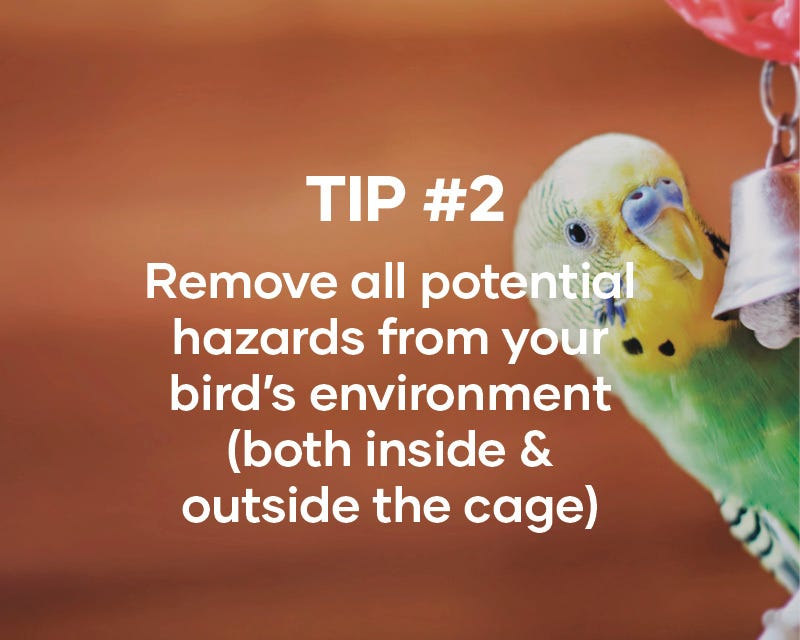
Important: Insect sprays and the fumes released from cooking with Teflon can be fatal, which is why their enclosure should be far away from high-traffic zones like the kitchen.
As birds are known chewers, it’s important to keep potential dangers away from their curious beaks. Electrical cords are of particular concern and you need to make sure that your bird won’t be able to access them. You’ll also need to be careful about what your bird can chew – a windowsill might be appealing but it may have been treated with paints or treatments that could be toxic for your bird. Similarly, there are a number of plants that can cause issues for your bird – common varieties to watch out for are lilies, ivy, parsley, jasmine, daffodils & honeysuckle.
In preparation to bring your pet bird home, you’ll need to identify & remove all these dangers to ensure you can keep them safe and healthy.
Finding the right spot for your bird’s enclosure
Your bird’s environment is very important, and though what’s inside their cage is most important, finding the right location in your house for the birdcage is also key.
Take into account the aroma sensitivities mentioned above when choosing the space and find a spot that is both quiet and can be nice and dark at bedtime. Ideally, their cage or aviary will sit beside a window so that your bird can enjoy the daytime sunlight and watch what’s happening in the world outside. That said, be very careful that your bird won’t be at risk of getting too hot or too cold depending on your region’s climate & season.
Important factors to consider when picking the perfect spot for your bird’s cage:
- Keep it level: Wherever you put your bird cage, make sure it’s not too high or too low; around chest level is perfect. Birds get scared & anxious if they’re too low. If they’re even higher, they will feel isolated from the people below.
- Human interaction: Keep your birdcage in a place where your birds will be able to frequently see and interact with the members of your family. Birds generally love & thrive on attention and would be really bored and lonely in an empty, unused room.
- Heat changes: Try not to keep your bird close to a heater or air conditioning vent as the rapid changes in temperature are unhealthy for them.
- Room with a view: Birds need natural sunlight for Vitamin D production, hormone balance, and organ, skin and feather health. To make sure they gets enough sunlight, ensure the cage is located an area exposed to natural light with the option to sit in the shade, as too much direct sunlight can be uncomfortable & can overheat your bird.


